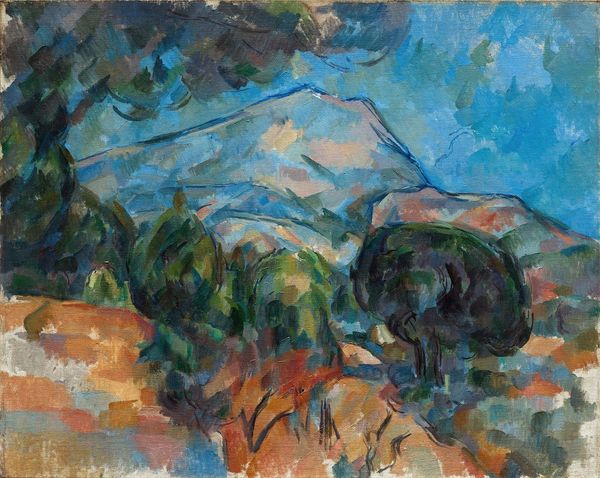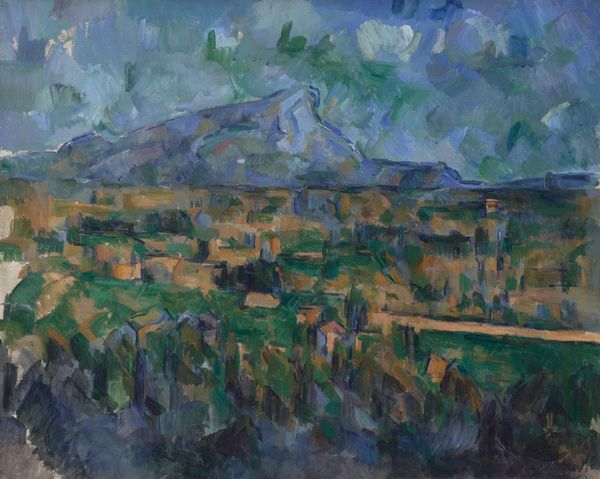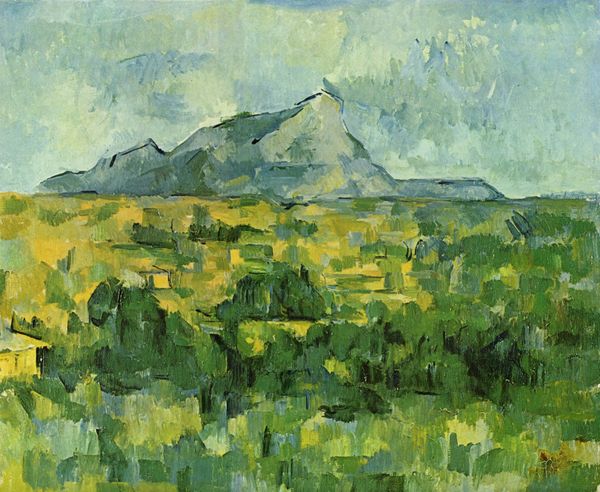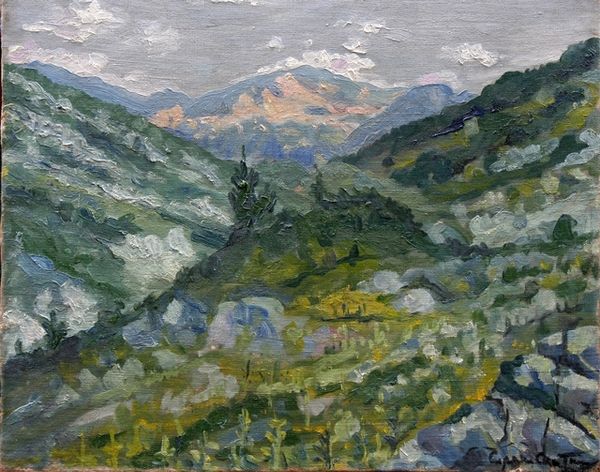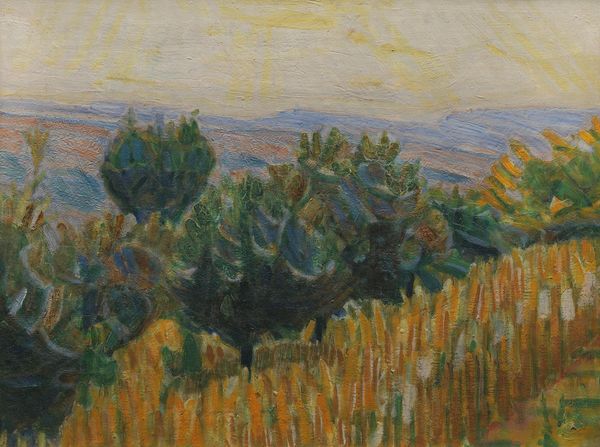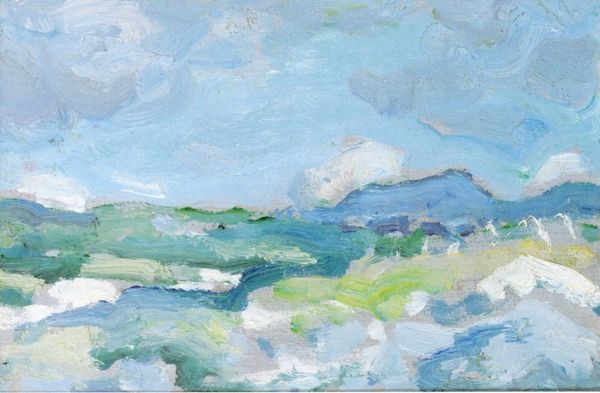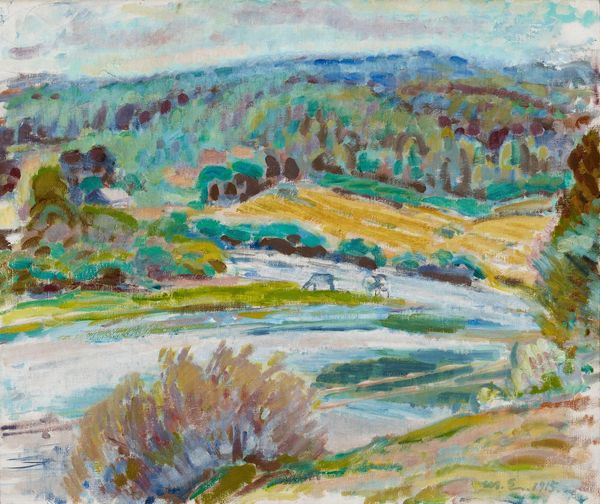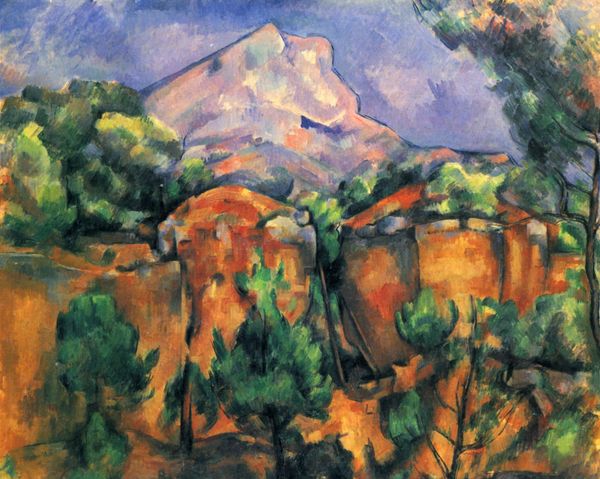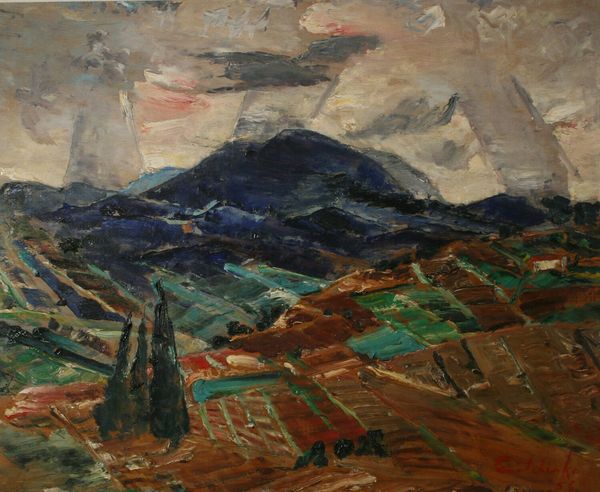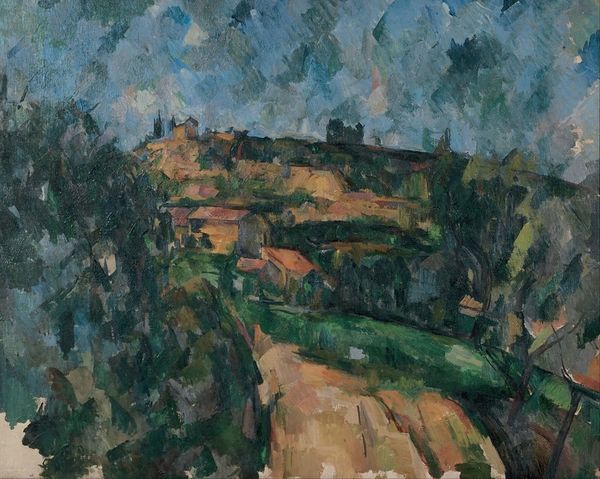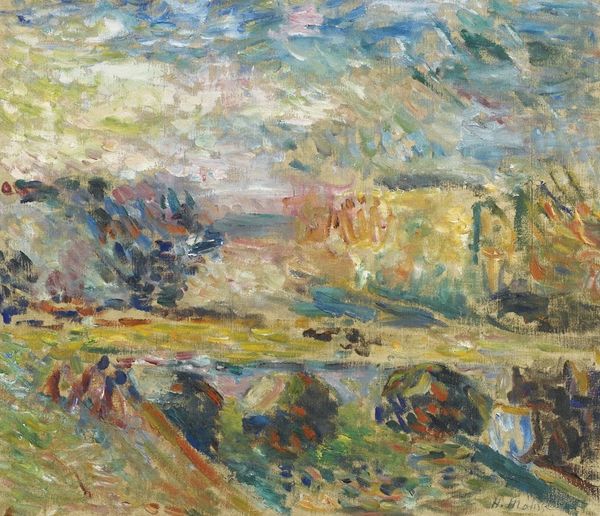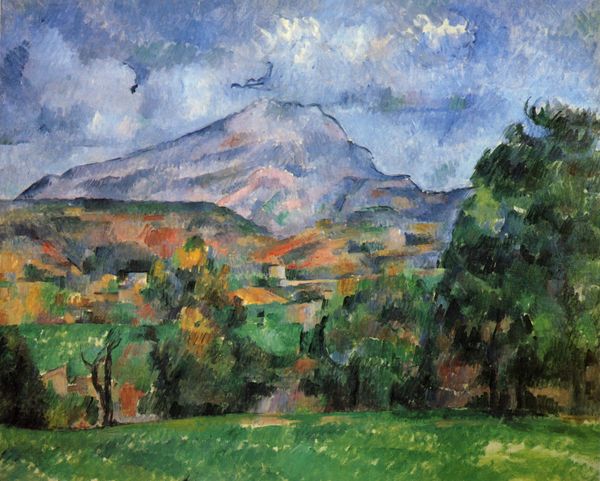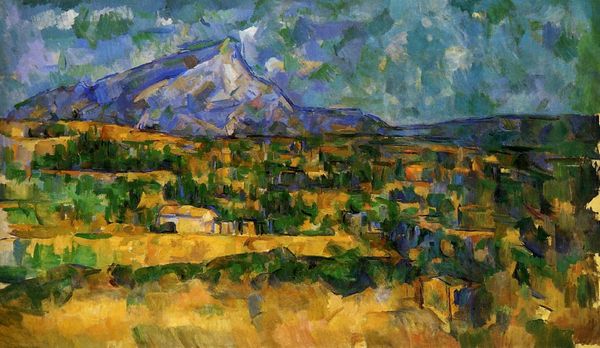
Copyright: Public domain
Curator: Immediately, I feel this earthy calmness radiating from the canvas. The air itself seems thick with a hazy, summery light. Editor: Here we have Paul Cézanne’s "Mont Sainte-Victoire," painted in 1906, one of many in a series exploring this iconic mountain in Provence. The medium, of course, is oil paint. And what is really noticeable is the mosaic-like construction that feels as if the landscape is being built piece by piece, brushstroke by brushstroke. Curator: Yes, there's a construction happening. Each little square of color feels like a carefully chosen note in a chord, doesn't it? And the way he renders the foliage…it’s less about depicting specific trees and more about capturing the essence of green, the *idea* of a forest. The colors don't try to look realistic at all. Editor: Absolutely. Think about the implications of the materials here – mass-produced oil paints, canvas made readily available by industrialization, enabling this new style of "plein-air" painting that Cézanne mastered. It speaks to changing production that fed into this unique perspective. It wasn't necessarily just some spontaneous vision, but tied to emerging capitalist models. Curator: You’re right to draw the socio-economic factors; but I tend to see this repeated motif of the mountain as Cézanne seeking the sublime through sheer force of artistic will, going back again and again, trying to capture something just beyond reach, using these modern, industrialized materials, yes, but toward something deeply transcendent and, dare I say, almost spiritual. He really believed painting from nature was the key to expressing an inner, personal reality, almost. Editor: Agreed, I’m probably going too far by stripping that magic from the picture! But if we're talking materials and effort, this was painstaking work. Each stroke had a purpose. But to use modern language, he wasn’t being exploited—instead, he was using modern modes of production to explore his art, pushing them toward expression! Curator: In essence, it's about both the paint and the painter, the mountain and the mind that perceives it. Editor: Precisely—seeing how all the material conditions helped shape Cézanne's vision certainly changes how I interpret this vista. I notice more now the tangible choices that went into making the picture. Curator: And looking beyond just the tangible elements, I rediscover how the painting draws us into Cezanne's personal quest to wrestle with form and light and color.
Comments
No comments
Be the first to comment and join the conversation on the ultimate creative platform.

